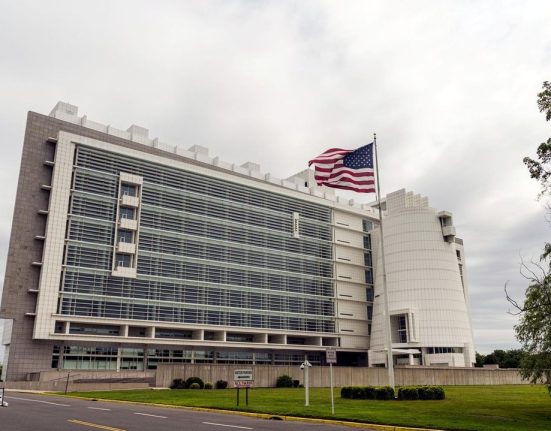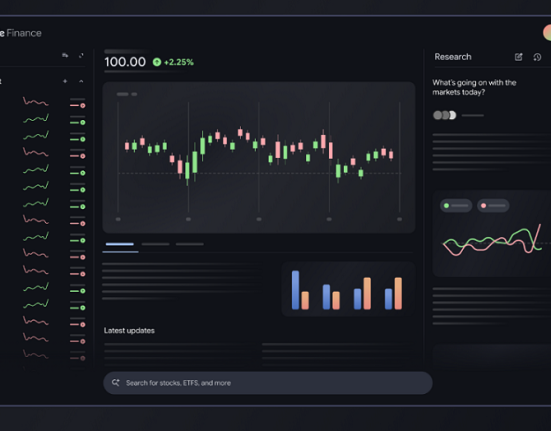I’ve filed many articles about the future of bank branches as an FT journalist. This is the first I have written while actually sitting inside one.
I’m not typing this in a hideously long queue; I’m on the free WiFi in a new Santander Work Café, sitting in the shared workspace with a matcha latte, while my choice of Thelonious Monk tracks play on the digital jukebox. And the most surprising thing of all? I can do all of this for free, even though I am not a Santander customer.
“You’ve got to give away something, otherwise there’s no reason for people to come inside,” says Andrew Booth, Santander’s head of customer interaction, who I am Zooming from one of the free bookable meeting rooms in the London Cheapside Café. Booth’s alarmingly hip-sounding job title shows you how fast the retail banking landscape is changing.
Some two-thirds of UK bank branches have closed in the past 10 years, with more than 6,000 banks and 20,000 ATMs vanishing for good. The lesser-known story is how the banks are transforming the rump of branches they have chosen to keep.
Traditional counters and security screens have given way to open plan banking “stores” offering everything from coffee, free workspace and meeting rooms to dementia clinics, educational events and safe spaces for customers fleeing domestic abuse.
Even digital banks want brand visibility and a point of contact on the high street. This week, Revolut launched branded ATMs that can also dispense replacement cards. The key question is, what else can a physical location do that a banking app cannot?
The short answer is that it can contain helpful human beings to assist customers needing face-to-face reassurance. This, bank bosses say, extends far beyond the category of customers who might unkindly be described as unprofitable — people on low incomes who are digitally excluded and reliant on cash.
Banking is a relationship of trust, and when we’re making big financial decisions, or dealing with complex issues, we like to look someone in the eye. The banks investing in transforming branches believe the combination of a brilliant app and face-to-face contact will win them custom.

So what sort of people do they want to attract? Santander’s 220 cafés around the world cater for entrepreneurs and personal customers in city centre locations. All have a designated business banking manager (how very 1990s!) but it’s possible to make an appointment with a private banker or financial planner in these and Santander’s remaining 349 UK branches.
Booth says the UK’s regulatory push to widen access to basic financial advice will hugely expand the kinds of conversations banks can have with customers about investing and managing money in future. The kinds of spaces banks want to create reflect retail concepts, from the Apple Store’s “showrooming” of new tech capability to Waterstones’ in-store book clubs, which build a community of loyal customers. Granted, getting a free coffee in exchange for an insurance quote is not quite as flash. But it’s a start.
Nationwide believes that simply having the choice of coming into a branch is helping it win customers of all ages. Its famous promise to keep all of its sites open until 2028 at least means it is literally the “last bank in town” in 135 locations around the UK. Nearly 200,000 more customers have used its branches year-on-year, and 40 per cent of Isas are opened in person (these tend to carry much higher balances than Isas transferred online).
However, Nationwide’s signature move is offering free 45-minute appointments with Admiral dementia nurses, available to customers and non-customers alike. With nearly 1mn people in the UK living with dementia, banks are a vital part of the system of support, says Amanda Beech, Nationwide’s director of retail services. Nationwide has a specialist support team to help affected customers and their carers manage money as times get more difficult.

A branch network is vital when things go wrong. Registering a power of attorney or sorting out someone’s financial affairs following a bereavement, often needs to take place in person. If customers have fallen victim to fraud, their trust in remote banking tends to evaporate. Then there’s losing a bank card or needing emergency cash. Banks say customers are frequently tripped up by this, not realising most cash points require a physical bank card, rather than a mobile phone tap.
Typing away, sipping my latte, I notice quite a few well-heeled customers coming in to get help with large money transfers. They could do this themselves online, but having someone trusted in the bank watch them as they do it is an important psychological reassurance.
Similarly, plenty of customers coming through the doors of the UK’s shared Banking Hubs are able to bank online, but require some “digital assistance”, according to Cash Access UK, which runs the scheme.
A crucial lifeline for personal and small business customers in more than 150 UK towns that have been left bankless, community bankers from different high street banks visit the hubs on designated days.
Often, customers want to be watched as they make an online transaction as they fear making a costly mistake. Cat Farrow, customer and strategy director at Cash Access UK, says forgetting a Pin is one of the most common queries. It’s possible to view your Pin in most banking apps, but many customers don’t know how. Having been shown in the Hub, they might feel more confident next time. The educational aspect also includes fraud awareness and debt advice sessions, which are hugely popular.
Refurbishing branches gives banks the opportunity to invest in much better accessibility for customers with disabilities. This is also a personal priority for HSBC UK chief executive Ian Stuart, who has a family member who is profoundly deaf post meningitis. “To many who need extra support and care to get through their lives, dealing with money and doing their everyday banking can be challenging, causing real frustration and anxiety,” he says.
HSBC’s Sheffield branch is the blueprint for this. Designed to be easy to move around for customers who are in wheelchairs, mobility scooters or pushing a buggy, the latest tech can assist deaf and visually impaired customers, and there’s even a sensory room for customers with neurodiverse children.
If you haven’t visited a physical bank branch for a while, this level of innovation might surprise you. But the array of different approaches shows the future of personal banking will not be an online-only story.
Claer Barrett is the FT’s consumer editor and author of the FT’s Sort Your Financial Life Out newsletter series; claer.barrett@ft.com; Instagram and TikTok @ClaerB







